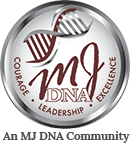Incorporating Technology into Assisted Living Facilities: The Benefits and Challenges
There are more than 810,000 Americans residing in assisted living facilities today. That number is expected to go up as more people from the baby boomer era step into late adulthood.
The role that these communities play is crucial to how these seniors enjoy a good quality of life. It’s no secret that those who work in assisted living face challenges in taking care of residents.
This is why a lot of assisted living facilities are now beginning to embrace technology as part of their system.
Technology in assisted living facilities
There has been a huge demand for assisted living facilities over the last few years. While it’s good for business, healthcare providers are becoming overwhelmed with responsibilities.
So, a lot of these facilities are now exploring the possibilities of incorporating smart technology into their operations. Not only to increase their efficiency but also to cut down on operational costs and lessen the weight on employees.
The benefits
One of the biggest benefits of using technology in facilities is automation. Instead of spending a lot of time documenting the daily activities of residents, healthcare providers can now automate these tasks to manage their time well and increase their efficiency.
Smart lighting, security systems, and other devices can also help providers keep track of the movements of residents and proactively intervene if they notice anything out of the usual but without the need to dedicate one staff to watch over a resident all the time. This helps with staffing problems that are hampering the industry today.
Smart technology can also be used as a preventive measure to help seniors address their medical conditions before they get worse and require the help of assisted living facilities. This will not only give them a better quality of life, but it will also help ease the overwhelming demand for these facilities.
For instance, people who have been diagnosed with diabetes can use different digital tools to monitor blood sugar levels and adopt a healthier lifestyle, so they don’t have to deal with serious complications that would require them to be in assisted living facilities down the line.
The potential challenges
Of course, adapting technology to assisted living facilities will not come without any challenges. Funding is one of the biggest challenges. These facilities also need to train their staff and go through a transition period, which can be challenging.
At the end of the day, adapting technology into an assisted living setup will be beneficial to both healthcare providers and residents.
It’s just a matter of finding the right funding, going through that transition, and slowly incorporating technology into assisted living facilities to make them more efficient.
Looking for an excellent senior living facility in Nebraska? Click here to learn more about Oxbow Living.
Oxbow Living offers Assisted Living & Memory Care out of Nebraska and to the Surrounding Cities: Ashland, South Bend, Greenwood, Murdock, Elmwood, Ithaca, Mead




